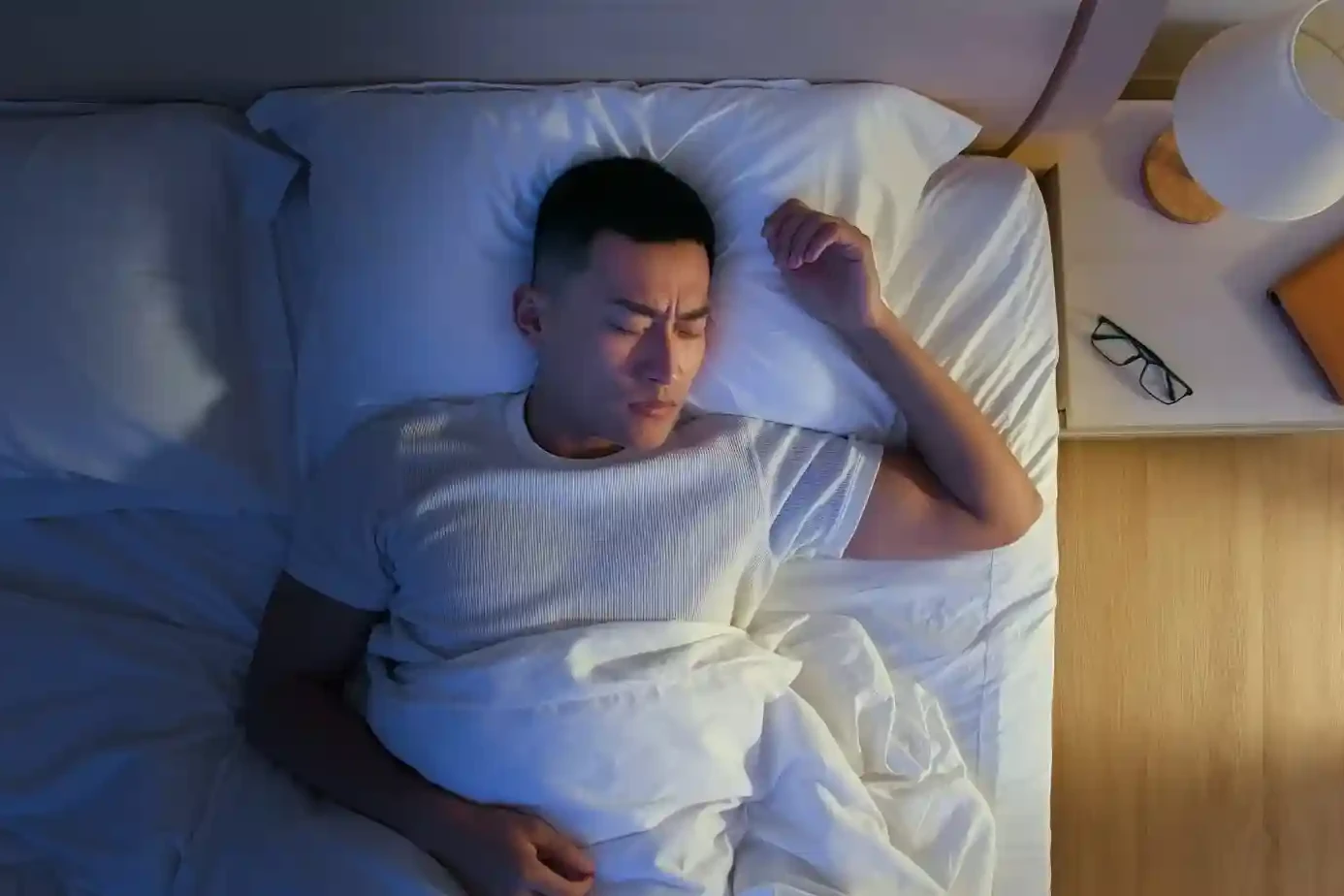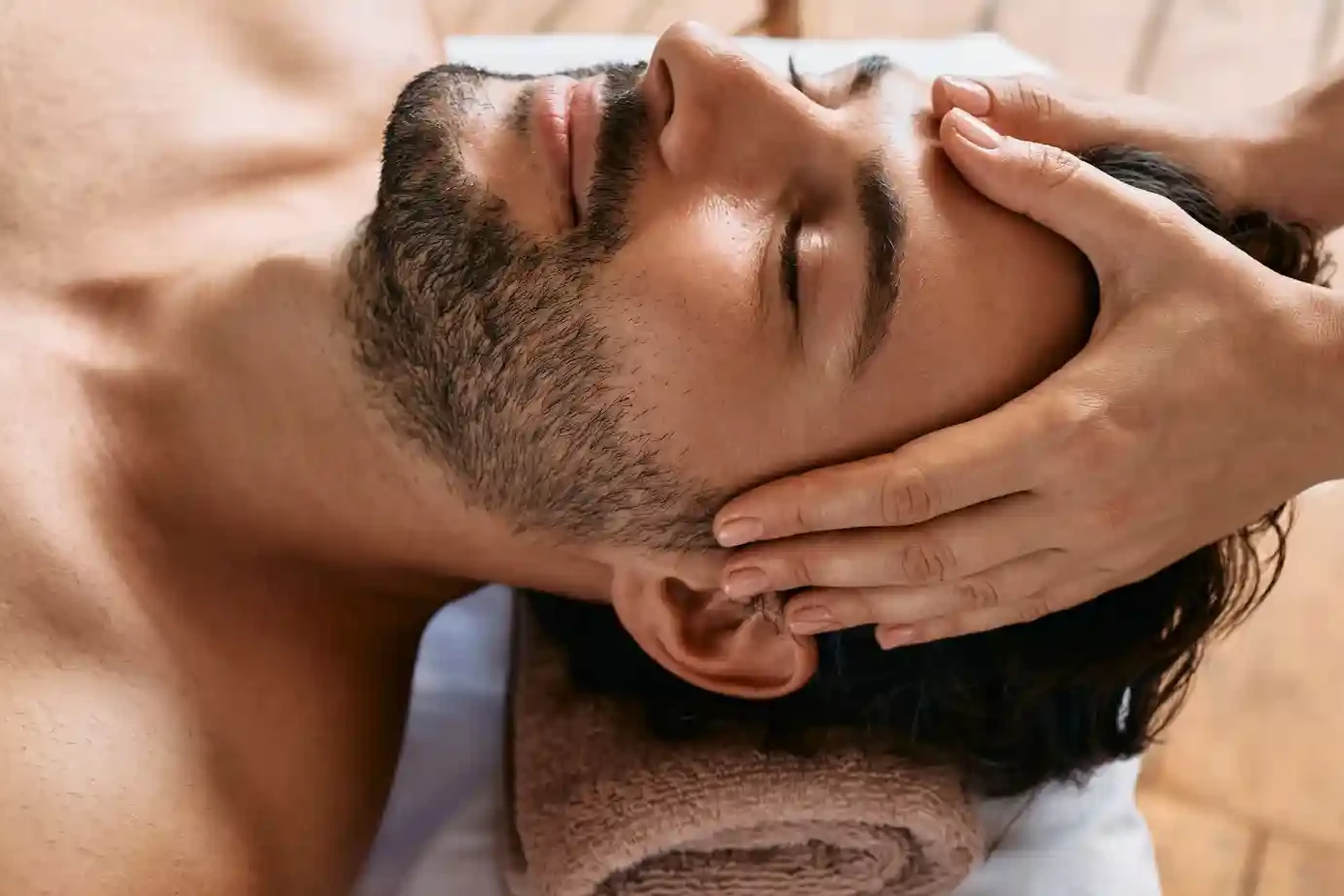Migraine and sleep are deeply connected. Poor nights increase pain attacks, and frequent migraines make restful nights harder. Building the right bedtime habits can protect your brain, cut triggers, and give you refreshing rest.
Table of Contents
ToggleLack of Sleep and Migraines: Why Sleep Matters
Doctors often stress that lack of sleep and migraines go hand in hand. When the brain misses deep rest, pain pathways stay active. Over time, this raises the number of attacks.
Research shows that adults who sleep fewer than 6 hours are almost twice as likely to face migraine episodes compared to those who get 7 to 9 hours. The reason is clear: the brain uses sleep to reset pain signals, balance hormones, and calm nerve pathways.
Missing this reset builds up stress inside the body. Triggers such as bright light, caffeine, or skipped meals become harder to tolerate when sleep is poor. That is why sleep doctors often recommend protecting night hours as carefully as you would take a medicine.
Why Is This Connection So Strong?
| Sleep Issue | Effect on Migraine |
| Insomnia | Raises frequency of attacks |
| Poor sleep quality | Triggers more daytime headaches |
| Irregular sleep schedule | Confuses body clock and pain threshold |
| Sleep apnea | Cuts oxygen, worsening migraine intensity |
Fixing your sleep routine may reduce both the number and severity of headaches.
Migraines and REM Sleep: What’s the Connection?
The stage of sleep called REM (Rapid Eye Movement) plays a special role in brain health. During this time, nerve cells recharge, and mood chemicals balance.
People with migraine often show changes in REM stages. Studies suggest migraines and REM sleep disruptions are common. Less REM sleep means the brain cannot calm pain circuits as it should. This explains why many migraine sufferers wake up with pain or have attacks in the early morning.
Your circadian rhythm and migraine relationship is important here. The circadian rhythm is your body clock. If bedtime shifts every day, this clock falls out of sync, and REM sleep suffers. By sticking to regular times, the body can restore REM balance and lower migraine risk.
How To Sleep With A Migraine: Practical Tips
Resting during an attack is hard, but smart adjustments help. People often ask how to sleep with a migraine, and the answer lies in reducing triggers that block rest.
- Dark, cool room: Block light and keep the room quiet.
- Ice or cool pack: Helps numb head pain while lying down.
- Breathing control: Slow breathing eases brain activity.
- Short naps: A 20–30 minute nap may reduce migraine pain without harming nighttime sleep.
Sometimes even lying down with eyes closed, focusing on steady breath, helps. Do not force long naps, since these can disturb nighttime rest.
Nighttime Routine To Prevent Migraine Attacks
Creating a healthy bedtime routine builds a stronger shield against triggers. Simple steps, repeated each night, help train the body to wind down naturally.
Have Your Final Meal 4 Hours Before Bedtime
Digestion keeps the body active. Eating late makes it harder to fall asleep and may even spark pain. Choose lighter meals in the evening. Heavy or greasy foods increase reflux and discomfort.
If you need a snack later, make it small. Citrus fruits, bananas are better choices than processed or spicy foods. Bananas contain magnesium, which may calm muscles and nerves before bed.
Take A Warm Shower Or Bath
A warm shower lowers muscle tension and signals the body to rest. Warm water also slightly cools the body afterward, helping natural sleep onset.
Avoid a cold bath at night. Cold water stimulates alertness and may prevent quick sleep. Warm water, on the other hand, is a natural relaxer.
Shut Off Screens 1 Hour Before Bedtime
Screens from phones, laptops, and TVs emit blue light, which reduces melatonin, the sleep hormone. Research shows that blue light and migraine headaches often go together because light disrupts both sleep and headache thresholds.
Turning off screens one hour before bed allows the brain to produce melatonin and prepare for quality sleep. Use dim lights instead of glaring bulbs during this hour.
Have A Small Snack 30 Minutes Before Bedtime
Sometimes hunger itself wakes you. A small snack prevents sudden drops in blood sugar. Choose plain crackers, oats, or bananas. Avoid caffeine, alcohol, and acidic snacks.
Late-night citrus fruits, bananas may seem harmless, but citrus is often a trigger, while bananas are usually safe. Learn which works best for your body.
Practice Meditation
Bedtime meditation for better sleep and migraine relief helps calm the nervous system. Even a short, guided 5-minute session reduces stress and supports deeper sleep.
Meditation can include mindful breathing, gratitude practice, or simply focusing on one calming word. Many people use meditation apps for support. Adding mindfulness lowers pain sensitivity and strengthens long-term migraine control.
These small practices combine to form a healthy evening routine for headache sufferers, reducing stress and balancing the body clock.
General Sleep Tips For People With Migraine
Beyond the night routine, your daily habits affect how your brain rests. Doctors often point to migraine prevention lifestyle tips that work best when done daily.
- Exercise: Light daily activity supports sleep and mood.
- Stress reduction before bed: Journaling, stretching, or reading instead of doom-scrolling.
- Avoid caffeine after 2 PM.
- Keep alcohol intake low, as it worsens both sleep and migraine.
- Stick to one sleep schedule, even on weekends.
- Keep your bedroom cool, dark, and quiet.
The American Migraine Foundation notes that fixing lifestyle choices is as important as medicine. Regular sleep, steady exercise, and stress control lower monthly migraine attacks.
Practical Tools To Improve Sleep And Reduce Attacks
- White noise machines or earplugs block sudden sounds.
- Use blackout curtains to cut light.
- Track your sleep and headaches in a journal. This helps spot hidden triggers.
- Try relaxation exercises before bedtime such as gentle yoga stretches.
- Keep your phone outside the bedroom.
If sleep issues continue, ask a doctor to test for insomnia, restless legs, or sleep apnea. Treating these helps migraines as well.
Takeaway
Migraine and sleep are tied in a cycle. Poor rest feeds pain, and pain ruins sleep. You can break this loop with simple, steady habits. Focus on a calming bedtime routine: finish meals earlier, take a warm shower, turn off screens, practice meditation, and go to bed at the same time daily.
When you respect your body’s clock, you strengthen your brain’s shield against pain. Protecting sleep is not just comfort, it is a form of migraine care.
FAQs
What is a healthy sleep schedule for migraines?
A steady sleep schedule means sleeping and waking at the same time daily, including weekends. Aim for 7 to 9 hours of consistent, high-quality rest each night.
Is napping good or bad for migraine sufferers?
Napping can be helpful if kept short. Limit naps to 20–30 minutes during the day. Longer naps may disturb nighttime sleep and worsen migraine frequency.
Will sleep cure a migraine?
Sleep may reduce migraine symptoms or even stop an attack for some people. However, not all migraines respond to sleep, and medical care may still be needed.
How to sleep at night with a migraine?
Sleep with a migraine by resting in a dark, cool room, using ice packs, and practicing slow breathing. Avoid screens and maintain calm to encourage restorative sleep.
How do I create better sleep habits?
Better sleep habits include setting a fixed bedtime, shutting off screens one hour before sleep, avoiding late meals, and using meditation or relaxation exercises nightly.
What is the best nighttime routine for migraine relief?
The best routine includes a light evening meal, a warm shower, turning off screens, a small snack, and meditation. These habits reduce triggers and support restful sleep.
What bedtime habits help prevent migraines?
Key bedtime habits include avoiding caffeine, limiting alcohol, shutting off screens, using relaxation techniques, and following a steady sleep schedule to lower nighttime migraine risk.
About The Author

Dr Chandril Chugh
This article is medically reviewed by Dr Chandril Chugh, he is committed & compassionate Board-Certified Neurologist, providing expert insights and reliable health information. with a Holistic Approach to Healing.
→ Book a consultation to discover which remedies suit your needs best.
About Author | Instagram | YouTube | Linkedin




